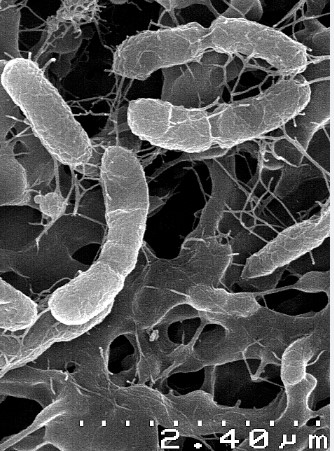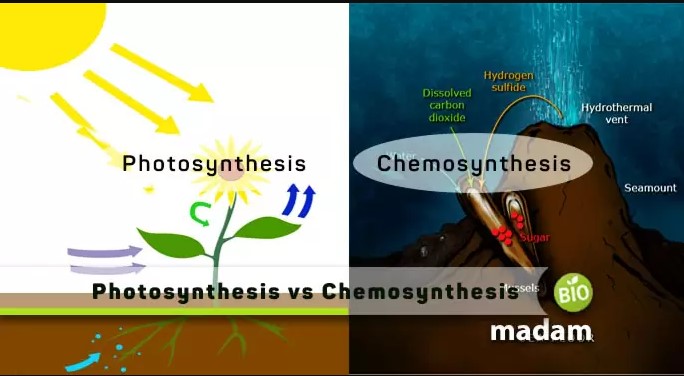In the vast, interconnected web of life, bacteria serve as foundational keystones, orchestrating the flow of energy through ecosystems with remarkable versatility. Among these microscopic engineers, photosynthetic and chemosynthetic bacteria stand out for their unique ways of harvesting energy. Their existence underpins not only the health of our planet’s most extreme environments but also the global cycles that sustain life as we know it.
Photosynthetic bacteria convert light energy into chemical energy through the process of photosynthesis, providing a significant portion of the Earth’s oxygen and serving as primary producers in many ecosystems. In contrast, chemosynthetic bacteria derive energy from the chemical reactions of inorganic molecules, thriving in environments devoid of sunlight, such as deep-sea vents, and playing crucial roles in nutrient cycling.
Both groups of bacteria embody the incredible adaptability of life, enabling ecosystems to flourish from the sunlit surfaces of oceans to the dark depths of the Earth. Their comparative study not only sheds light on the fundamental processes of life but also highlights the diverse strategies organisms have evolved to harness energy in a planet of extremes.

Bacteria Fundamentals
What Are Bacteria?
Bacteria are microscopic organisms that inhabit virtually every corner of our planet, from the deepest oceans to the highest mountains, and even inside the bodies of other living beings. They are single-celled, possessing a simple structure without a true nucleus or specialized organelles, classified under the domain Prokaryota. Despite their simplicity, bacteria exhibit incredible diversity in terms of shape, size, and metabolic capabilities, making them crucial players in the Earth’s ecological and biological systems.
Their role extends beyond basic survival; bacteria are essential for recycling nutrients, purifying water systems, promoting plant health, and even regulating the atmosphere. Given their ubiquity and diversity, understanding bacteria is vital for comprehending life’s processes on Earth.
Energy in Bacteria
Bacteria have evolved various strategies to meet their energy needs, crucial for their survival, growth, and reproduction. The primary ways bacteria obtain energy are through photosynthesis and chemosynthesis, although many bacteria also derive energy from the breakdown of organic compounds, a process known as heterotrophy.
- Photosynthetic bacteria capture light energy and convert it into chemical energy, in a process similar to that used by plants. However, they employ different pigments and mechanisms to adapt to a wide range of environments.
- Chemosynthetic bacteria, on the other hand, extract energy from inorganic compounds through chemical reactions. This ability allows them to inhabit environments where light is not present, such as deep-sea vents.
This diverse energy acquisition showcases the adaptability of bacteria, enabling them to colonize virtually every environment on Earth.
Photosynthetic Bacteria
Definition and Process
Photosynthetic bacteria are those that use light as their primary energy source to synthesize organic compounds from carbon dioxide. Unlike plants, which use chlorophyll for photosynthesis, photosynthetic bacteria can use other pigments, allowing them to absorb a broader spectrum of light. This process not only produces energy (ATP) but also generates oxygen, contributing significantly to the Earth’s atmosphere and life support.
Types and Examples
There are several types of photosynthetic bacteria, each with unique characteristics and ecological niches:
- Cyanobacteria: Also known as blue-green algae, cyanobacteria are the most well-known group, capable of performing oxygenic photosynthesis similar to plants. Examples: Spirulina and Microcystis.
- Purple bacteria: These use bacteriochlorophylls for photosynthesis and are found in aquatic environments. Examples: Rhodobacter sphaeroides and Rhodospirillum rubrum.
- Green sulfur bacteria: Utilize sulfur compounds for photosynthesis and are usually found in deep water or mud. Examples: Chlorobium tepidum and Prosthecochloris aestuarii.
Role in Ecosystems
Photosynthetic bacteria play pivotal roles in their ecosystems:
- Oxygen production: Cyanobacteria, in particular, contribute to the Earth’s oxygen levels.
- Primary producers: They form the base of the food web in many aquatic systems, supporting diverse life forms.
- Nutrient cycling: Involved in nitrogen fixation and carbon cycling, helping maintain environmental balance.
Chemosynthetic Bacteria
Definition and Process
Chemosynthetic bacteria obtain energy by oxidizing inorganic compounds, such as hydrogen sulfide, ammonia, or methane, in a process called chemosynthesis. This energy production method does not require sunlight, enabling these bacteria to live in environments where photosynthetic organisms cannot survive, such as hydrothermal vents on the ocean floor.
Types and Examples
Chemosynthetic bacteria can be grouped based on the inorganic substances they utilize:
- Sulfur-oxidizing bacteria: Oxidize hydrogen sulfide to sulfate, providing energy and nutrients. Examples: Thiobacillus and Beggiatoa.
- Iron-oxidizing bacteria: Use iron as their energy source. Examples: Ferrovum and Gallionella.
- Methanotrophs: Utilize methane as an energy source. Examples: Methylococcus capsulatus and Methylosinus trichosporium.
Ecological Impact
Chemosynthetic bacteria are foundational to some of the most unique ecosystems on Earth:
- Deep-sea communities: They support life in hydrothermal vent communities, where sunlight does not reach, by providing a primary energy source for the food web.
- Biogeochemical cycles: Play crucial roles in cycling essential nutrients such as nitrogen, sulfur, and iron.
- Environmental detoxification: Help in detoxifying polluted environments by breaking down inorganic compounds.

Key Differences
Energy Source
The fundamental distinction between photosynthetic and chemosynthetic bacteria lies in their energy sources. Photosynthetic bacteria harness light energy from the sun, transforming it into chemical energy through a process that generates oxygen and organic compounds. This process is akin to solar panels converting sunlight into electricity, but in this case, the bacteria are producing food and oxygen. In contrast, chemosynthetic bacteria tap into the chemical energy of inorganic molecules, such as hydrogen sulfide or ammonia. These bacteria are like miners, extracting energy from chemical compounds found in environments where sunlight does not reach.
Environmental Roles
Photosynthetic and chemosynthetic bacteria play different but equally critical roles in their ecosystems. Photosynthetic bacteria are often found in environments rich in light, such as the surfaces of water bodies, where they contribute to oxygen production and form the base of the food web. Their ability to convert carbon dioxide into organic material through photosynthesis is a cornerstone of the carbon cycle, supporting a wide range of life.
On the other hand, chemosynthetic bacteria thrive in dark, often extreme environments, such as deep-sea vents or hot springs, where no light penetrates. They provide the foundation for unique ecosystems, creating organic material from inorganic compounds, supporting life forms that rely on them for food. This capability makes them vital players in nutrient cycling, especially in environments isolated from the surface world.
Biological Importance
The biological importance of both bacteria types cannot be overstated. Photosynthetic bacteria, particularly cyanobacteria, have been instrumental in shaping the Earth’s atmosphere and enabling the evolution of higher life forms by contributing to the oxygen content. They also serve as primary producers in many aquatic ecosystems, sustaining a diverse range of organisms.
Chemosynthetic bacteria are essential for life in environments devoid of sunlight, providing an energy base for complex communities at the bottom of the ocean and other dark habitats. They are key agents in the recycling of nutrients, particularly sulfur and nitrogen, crucial for life’s biochemical processes.
Coexistence and Interaction
Synergy in Ecosystems
Photosynthetic and chemosynthetic bacteria often coexist and interact within the same ecosystem, contributing to its complexity and productivity. In some cases, the waste products of one serve as the energy source for the other, creating a cycle of energy transfer that supports a diverse array of life forms. For instance, in some aquatic environments, chemosynthetic bacteria may use the organic material produced by photosynthetic bacteria as a fuel source, linking the surface and the deep, dark areas of the water column.
Impact on Other Organisms
The impact of these bacteria on other organisms, including humans, is profound. Photosynthetic bacteria are a key source of oxygen and food for numerous marine and freshwater species. They also influence climate regulation through their role in the carbon cycle. Chemosynthetic bacteria, by providing a basis for life in extreme environments, expand our understanding of life’s adaptability and have implications for searching for life beyond Earth. Moreover, their unique metabolic processes offer insights into novel biotechnologies, including waste treatment and bioenergy production.
Current Research
Advances in Understanding
Recent research into photosynthetic and chemosynthetic bacteria has unveiled fascinating insights. Studies have shown how some photosynthetic bacteria have adapted to low-light environments using specialized pigments, expanding our understanding of photosynthesis’ versatility. Conversely, research on chemosynthetic bacteria has revealed new biochemical pathways for energy extraction from inorganic compounds, showcasing the metabolic diversity of life.
Applications and Future Directions
The ongoing study of these organisms opens up exciting applications in biotechnology and environmental management. For instance, photosynthetic bacteria are being explored for their potential in biofuel production, carbon sequestration, and as bio-fertilizers to enhance crop yields without chemical inputs. Chemosynthetic bacteria hold promise in bioremediation, utilizing their ability to metabolize pollutants into less harmful substances, and in mining operations to extract metals from ores.

Frequently Asked Questions
What are photosynthetic bacteria?
Photosynthetic bacteria are microorganisms that can convert light energy into chemical energy through photosynthesis. This process involves capturing light energy and using it to transform carbon dioxide and water into glucose and oxygen, providing essential nutrients and oxygen to many ecosystems.
How do chemosynthetic bacteria obtain energy?
Chemosynthetic bacteria obtain energy by oxidizing inorganic substances, such as hydrogen sulfide or ammonia, in a process called chemosynthesis. This enables them to produce organic compounds from carbon dioxide, serving as a primary food source in ecosystems where sunlight is not available, such as deep-sea hydrothermal vents.
Why are photosynthetic and chemosynthetic bacteria important?
Photosynthetic and chemosynthetic bacteria are crucial for their ecosystems, playing key roles in the global cycles of nutrients and energy. Photosynthetic bacteria contribute significantly to oxygen production and carbon cycling, while chemosynthetic bacteria support unique ecosystems in environments where light cannot reach, recycling nutrients and providing a base for the food web.
Can photosynthetic and chemosynthetic bacteria coexist?
Yes, photosynthetic and chemosynthetic bacteria can coexist in the same environment, especially in areas where environmental conditions allow for both light penetration and the presence of inorganic molecules suitable for chemosynthesis. Their coexistence often leads to complex and highly productive ecosystems, exemplifying the diversity of life’s energy solutions.
Conclusion
The exploration of photosynthetic and chemosynthetic bacteria not only enriches our understanding of life’s fundamental processes but also underscores the resilience and diversity of life on Earth. These microorganisms exemplify nature’s ingenuity in adapting to and thriving within a vast array of environments, from the radiant warmth of sunlit waters to the shadowy realms of the ocean’s depths.
Their study is a testament to the complexity of life and the interconnectedness of ecosystems, highlighting the importance of each organism, no matter how small, in the global tapestry of life. As we continue to uncover the mysteries of these bacteria, we gain not only insights into the workings of our planet but also inspiration for future innovations in energy, medicine, and environmental conservation.
